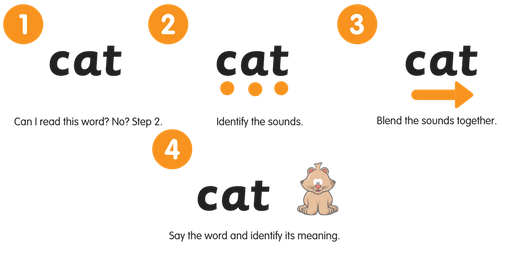Reading

Tips for helping your child to enjoy books:
• Encourage your child to pretend to 'read' a book before he or she can read
words.
• Schedule a regular time for reading - perhaps when you get home from
school or just before bed.
• Look for books on topics that you know your child is interested in - maybe dragons,
insects, cookery or a certain sport.
• When you read to your child, make the experience interactive - ask questions about
the story, the pictures and what they think of the characters.
• Enrol your child at the local library so they can try new books regularly
• Keep an eye out for the themes that catch your child's imagination at school - and
help follow it up with more reading.
Here are some things to talk about, when sharing books at home.
• Locate and recall title • What do you think X might say?
• What is happening in the picture? • Chat about the story and relate to own
experiences
• Who is in the story? • Did you enjoy the story? Why?
• How does X feel? How do you know?
• What do you think will happen next?
• What happened at the beginning? End?
Here are some tips for helping your child to read the text.
• Check children are reading print from left to right. (Running their finger
underneath the text will help.)
• Encourage children to ‘sound talk’ words they don’t know.
• If they make a mistake ask ‘Does that look right?’
• ‘What is happening in the picture that could help?'
Activities to try at home!
• Splat the letter! Write graphemes on individual pieces of paper/post its, you say a
letter sound and your child splats the correct grapheme with a fly swat!
• Box of sounds- place cards with letters on in to a box. Children choose a letter and
say the sound it makes. They could then match the letter to an object or picture of
something beginning with that sound.
• Sound sorting- gather a selection of objects from around the house and sort them into tubs labelled with the letter sound that the object begins with.
• Bucket of sounds – Label 3 or 4 buckets or ice cream tubs with a grapheme on each, Say a sound and your child throws a ball in to the matching bucket and says the sound.
• What’s in the box? Place ‘post its’ with simple words on, in to a box or bag. Children
choose a word, sound talk it and blend the sounds to read the word. They could then
match this to a picture or an object. This game can be adapted to use segmenting.
Children choose a picture from the box, sound talk it, they could match it to a word,
or have a go at writing the word.
• Common word bingo- write 4 common words on a piece of paper, then write them anda few more on to ‘post its’, place in to a bag. The bingo caller says a word then yourchild crosses it off, if they have a matching one, on their bingo board. Start off withthe bingo caller showing them the word, then see if they can identify the word
without it being shown.
• Run to the word- write 4 words on separate pieces of paper, or write them in chalk
outside. You ‘sound talk’ a word and your child runs to the word and reads the word byblending the sounds together.
• Silly sentences – Choose a word or picture and make up a silly sentence using that
word.
• Quick write- say a letter sound and your child has a go at writing the letters that
make the sound.
• Countdown- make a list of words. See if your child can sound talk, blend and read
them before the time runs out on an egg timer.

